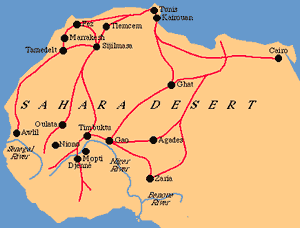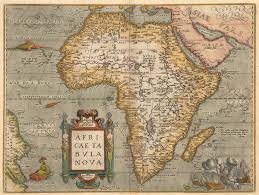Ibadan Through the Eyes of History

Ibadan Through the Eyes of History
Uncover the rich historical journey of Ibadan, from its warrior roots to becoming one of West Africa’s most influential cities in politics, culture, and education.
In the heart of southwestern Nigeria lies Ibadan, a city whose origins are as fierce and resilient as the warriors who founded it. With its name derived from the phrase “Èbá-Òdàn”, meaning “by the edge of the savannah or meadow,” Ibadan is not just a city; it is a symbol of survival, strategy, and unity in the face of chaos.
The Beginning: Lagelu and the First Settlement
The earliest foundation of Ibadan is traced to Lagelu, a legendary military leader from Ile-Ife. Around the 16th century, he left Ife with a group of followers, seeking new land to settle. They arrived at a place surrounded by hills and forests, naming it Eba Odan due to its location between the grasslands and thick forests. This first settlement thrived until an Egungun (masquerade) festival incident broke a sacred taboo: an Egungun was unmasked in public, an abomination in Yoruba belief.
The news of this desecration reached Alaafin Sango of Oyo, who sent warriors to destroy the city in retaliation. Lagelu and a few survivors fled to the hills, where they survived on fruits, snails, and corn paste (eko). The snail shell (ikarahun) used as a spoon during this time remains part of Ibadan's oríkì (praise poetry) today.
From that refuge, they returned and built a new settlement named Eba'dan, later known as Ibadan.
Ibadan as a Military Camp: The 1829 Turning Point
By the early 19th century, Yorubaland was in chaos. The collapse of the Old Oyo Empire had created a vacuum, with different tribes at war. In 1829, allied warriors from Oyo, Ife, Ijebu, and Egba settled at the Ibadan site to create a military war camp. Their goal was to protect the Yoruba people from Fulani expansion and internal conflicts.
Ibadan grew rapidly, attracting warriors, refugees, and traders. It transformed from a war camp into a permanent settlement and soon a military empire of its own. By the mid-19th century, it had become the most powerful Yoruba city, controlling surrounding towns like Iwo, Osogbo, and Ilesa.
Warlords, Politics, and Governance
Unlike traditional Yoruba towns governed by kings (Oba), Ibadan developed a republican style of leadership. Governance was led by powerful war generals and high chiefs. Over time, two chieftaincy lines emerged:
- The Baale line, responsible for civic leadership.
- The Balogun line, responsible for military affairs.
This system led to checks and balances, with leadership rotating between the two lines. In 1936, the title Baale was replaced with Olubadan, giving Ibadan a royal stature befitting its size and influence.
Colonial Era and British Influence
Ibadan’s influence didn’t fade with colonialism. In 1893, it became a British protectorate after Baale Fijabi signed a treaty with the British. The city was chosen as the headquarters of the Western Region in 1939 due to its central location.
The British built railways and roads, especially the Lagos-Ibadan railway in 1901, turning Ibadan into a major trade and education center. The city produced cocoa, cotton, and palm oil, attracting businesses from Lagos, Kano, and beyond.
In 1948, the University of Ibadan was established, the first in Nigeria, alongside the University College Hospital (UCH). These institutions made Ibadan a hub of learning, science, and medicine in Africa.
Military Conflicts and Growth
Ibadan played a pivotal role in many Yoruba and Nigerian wars. In 1840, its forces defeated the Fulani of Ilorin in the famous Battle of Osogbo, halting their southern expansion. It later resisted internal threats, including rebellions from Egba and Owu allies.
In 1830, the Egbas and Owus withdrew from Ibadan due to internal tensions. Despite these fractures, Ibadan kept expanding. It welcomed people from all over Yorubaland, creating a multiethnic but united military city state.
The Story of Efunsetan Aniwura: The Iyalode of Ibadan
One of the most powerful figures in 19th-century Ibadan was Efunsetan Aniwura, an Egba woman who became Iyalode (female leader) of the city. She owned massive farmland, hundreds of slaves, and was a key financier of Ibadan’s wars.
But tragedy struck when her only daughter died. She became bitter and increasingly harsh toward her slaves and society. Her fall came when she clashed with Aare Latoosa, the military ruler of Ibadan. Seen as a threat to his power, she was executed under mysterious circumstances in 1874.
Modern-Day Ibadan
Today, Ibadan is still one of Nigeria’s largest cities by landmass and population. With over 3.5 million residents, it is the capital of Oyo State and home to a diverse population.
The city is known for:
- Premier FM and the first TV station in Africa, WNTV (1959)
- Cocoa House, once the tallest building in West Africa
- Rich traditions in masquerade festivals (Egungun), bead-making, and blacksmithing
It remains an important cultural, academic, and economic center in Yorubaland.
From the war cries of the 1800s to the scholarly calm of today’s lecture halls, Ibadan’s story is one of resilience, reinvention, and relevance. It was born in war, raised by warriors, and matured through trade, intellect, and leadership. Whether you walk through Mapo Hill or visit the University of Ibadan, you are stepping into layers of Yoruba history carved by ambition, struggle, and vision.


